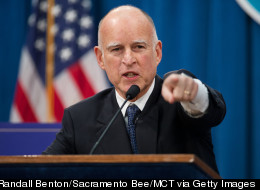
As Perry Castro contemplated implementing the Affordable Care Act at his business in Virginia, he feared he would need a new full-time employee to handle all the requirements.
In mere months, Allied Associates International would have to tell the government how many hours each of its 70 employees worked, whether they were enrolled in the company’s health plan, and numerous other facts. Such extensive recordkeeping was the last thing the defense contractor needed as it struggled to navigate federal budget cuts and a halting economic recovery, Castro said.
Complaints from small businesses across the country influenced the Obama administration’s decision Tuesday to delay a requirement that all employers with more than 50 workers provide health insurance to employees who log more than 30 hours a week.
So for many companies such as Castro’s, the one-year delay came as a relief, if only a temporary one.
“Sure, it gives me one more year to operate without the added costs of the new reporting requirements, but other than that, it doesn’t really help us,” said Castro, whose company provides cyber-intelligence and training services to the Defense Department. “As long as that hammer is still cocked and ready to fall, we’re going to get hit with it sometime. It’s just a matter of when.”
The requirements were confusing, burdensome and more work than his staff could handle, Castro said. It is frustrating given that the company already provides health insurance that most employees use, he said.
“I run a very lean back office, which helps me keep my costs down [and] my employees well compensated,” he said. “The more reporting requirements they add, the more my administrative costs go up, and that’s a shame.”
Since the 2010 enactment of the health-care overhaul, business owners have railed against many of its provisions, including the “employer mandate” and its financial penalties for noncompliance.
“Sure, it gives me one more year to operate without the added costs of the new reporting requirements, but other than that, it doesn’t really help us,” said Castro, whose company provides cyber-intelligence and training services to the Defense Department. “As long as that hammer is still cocked and ready to fall, we’re going to get hit with it sometime. It’s just a matter of when.”
The requirements were confusing, burdensome and more work than his staff could handle, Castro said. It is frustrating given that the company already provides health insurance that most employees use, he said.
“I run a very lean back office, which helps me keep my costs down [and] my employees well compensated,” he said. “The more reporting requirements they add, the more my administrative costs go up, and that’s a shame.”
Since the 2010 enactment of the health-care overhaul, business owners have railed against many of its provisions, including the “employer mandate” and its financial penalties for noncompliance.
Businesses said the reporting requirements that come with the law will eat away at valuable staff time or, in cases such as Castro’s, require a new employee.
They say the work would be especially burdensome in many retail and service jobs, where employee hours often shift from week to week and turnover is high.
In addition, many businesses were concerned that the federal reporting systems used by employers to report on their employees’ health benefits were untested. Many complained that the law’s regulations have yet to be fully fleshed out.
At a minimum, business advocacy groups said, the delay will give employers time to learn more about how the health-care marketplace is being reshaped by the law.
Employers said they would benefit by seeing how the new health insurance exchanges are working and what options are available from insurance plans before they make crucial decisions about health-care offerings for their workers.
“It is a welcome relief for most employers, especially for those who had to make some decisions about benefit changes and maybe even workforce changes for 2014,” said Steven Wojcik, vice president of public policy at the National Business Group on Health, a nonprofit association of more than 360 large employers. “We should know a lot more a year from now.”
Although the employer mandate is delayed, other parts of the law are moving forward, creating new tasks for employers.
“This type of ad hoc, individualized reporting beginning this fall and continuing through 2014 is still likely to be administratively challenging for many employers,” said Brian Haile, senior vice president for health policy at Jackson Hewitt Tax Service.
Many opponents of the Affordable Care Act have argued that the law will be a disincentive to create new jobs in a struggling economy, particularly for firms that have just fewer than 5o workers.
Some employers said they would cut workweeks below the 30-hour threshold to avoid the mandate.
The National Federation of Independent Business is among the organizations that have predicted that the law will prove to be as unworkable next year as they believe it is now.
“Temporary relief is small consolation,” said Amanda Austin, director of federal public policy for the business group. “We need a permanent fix to this provision to provide long-term relief for small employers.”
Original Article By Michael A. Fletcher and J.D. Harrison via http://articles.washingtonpost.com/2013-07-03/business/40344147_1_health-insurance-requirements-employees








